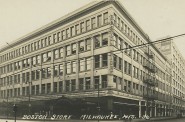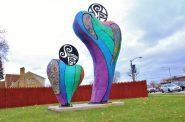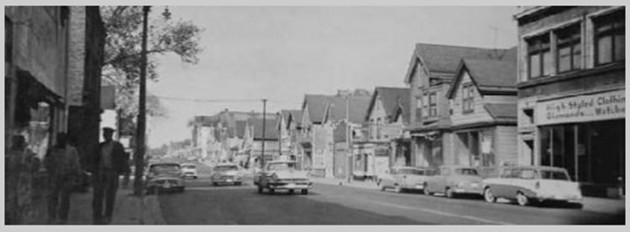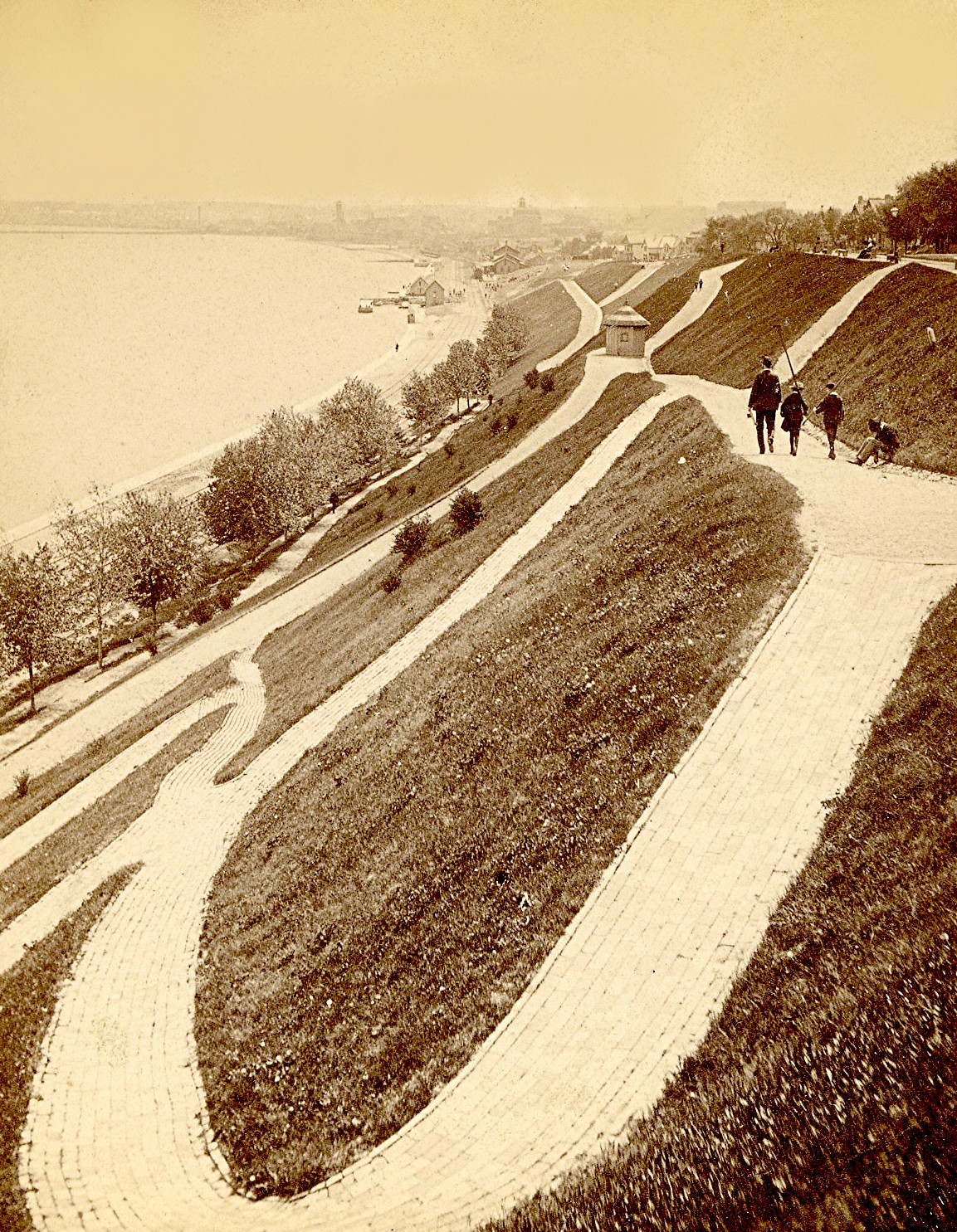The Lake Bluff of Yesteryear
This late 1880s photo shows the dramatic views afforded by the winding paths of Juneau Park.
In the second half of the 1880s, the landscaping of Juneau Park would be complete. The park was mostly grass in order to preserve the view of Lake Michigan. Paved curving walkways would lead pedestrians close to the lake, at least until they arrived at the railroad tracks. The original Chicago & Northwestern depot is faintly visible on the background.
The park would prove to be a great success and a source of civic pride. There would be many stereoviews and postcards produced of the park, but this one truly captures the dramatic setting. It is a photo by famed photographer H. H. Bennett, who was commissioned by the Chicago, Milwaukee & St. Paul Railroad to photograph the landscape along the company’s track in Wisconsin. Bennett, perhaps best known for his photos of Wisconsin Dells, took some 200 stereoviews of Milwaukee, beginning in the late 1870s. This was one of his last.
The success of this park would lead to the establishment of Lake Park in the 1890s, designed by Frederick Law Olmstead, that would have beaches, ravines and many mature trees. Also there were no railroad tracks to impede access to the beach.
Jeff Beutner is a collector of photographs, postcards and stereoviews of old Milwaukee. This column features these images, with historical commentary by Beutner.
Yesterday's Milwaukee
-
When Boston Store Was Big
 Apr 18th, 2018 by Jeff Beutner
Apr 18th, 2018 by Jeff Beutner
-
Sherman Park Has Been a Melting Pot
 Aug 25th, 2017 by Jill Florence Lackey, PhD
Aug 25th, 2017 by Jill Florence Lackey, PhD
-
The Rise and Fall of Bronzeville
 Aug 5th, 2017 by Jill Florence Lackey, PhD
Aug 5th, 2017 by Jill Florence Lackey, PhD


















Thanks for doing this series, Jeff. That was quite a network of paths (looks like brick on the bluff and perhaps crushed stone on flat land). Seems like challenging grade in some areas…We’re lucky they took so much pride in preserving the views and as much access as possible.
Seems like fairly conclusive evidence that the Transit Center likely wasn’t lake bed as POP is suggesting…
Coincidental timing?
Milwaukee Public Museum has an artist rendering of downtown Milwaukee around 1835. Almost all wetland and marsh. Over 1,000 acres of wetland were filled with garbage and soil all the way out to what is today Miller Park with 10-50 feet on top of the wetland areas. This included much of the lakefront. The flowage of water that left the waterways came out around what is today Mitchell Street and meandered over time. further south till about the 1850 when Kilbourn made the current day cut for the harbor. Rivers that were normally 6 feet in depth were dredged to a depth of 20 feet and the fill tossed onto the other side of the walls forever changing the estuary. The estuary lakefront landscape has always been fluid from Wisconsin Avenue south to Beacher Street before European settlement.
East and West of the Milwaukee River and north of Wisconsin Avenue was a Tamarack wetland all the way to 6th Street.
Anyone that builds in this area knows they need about 100 feet of piling to hit stability.
I have also been involved in soil borings during past years in that area and all kinds various 1800s bottles and garbage debris show up. Archaeologists and collectors would love digging there. More than half of all wetlands in Wisconsin have been filled over prior to 1950.
John: A photograph that shows filled land in the 1880s does not tell anything about where the lake and the land ended in 1848 when Wisconsin became a state. Maps from before the 1880s show that the railroad tracks were built on a berm that was constructed out in the lake, and that there was open water between the tracks and the lakeshore. POP is absolutely correct on the history and geography — examine the historical records first, then tell us what they prove.
It would be nice to see the paths again. Shows how far we have regressed over the years. Now we have a barrier of fallen and dead trees blocking the city from the lake. A few trees have been removed for a drainage project and it has fast become the most popular spot on the bluff. Imagine is all the trees would be replaced with a landscaped view. Juneau Park would see a gorgeous revival.